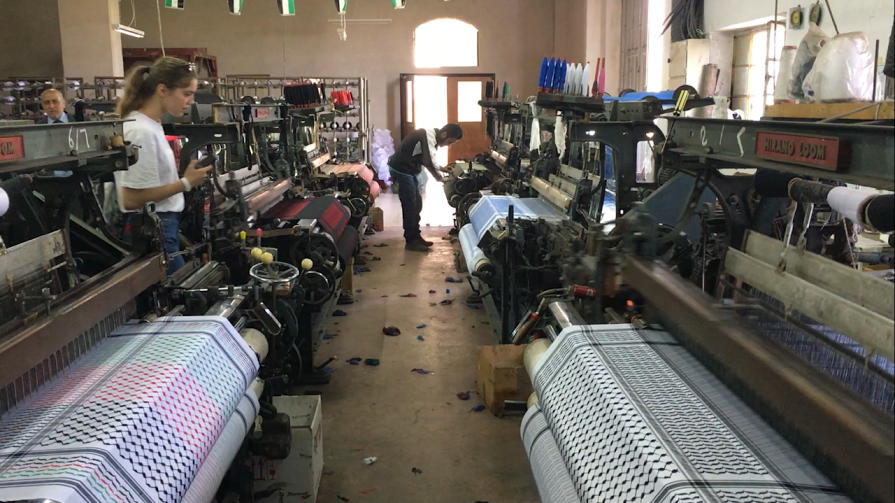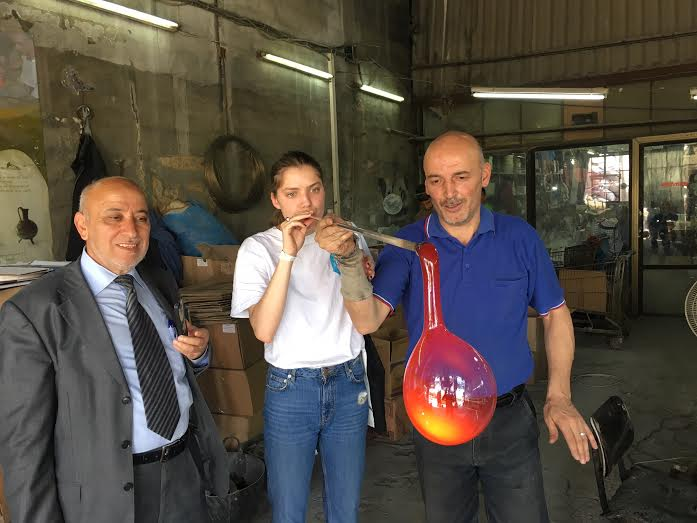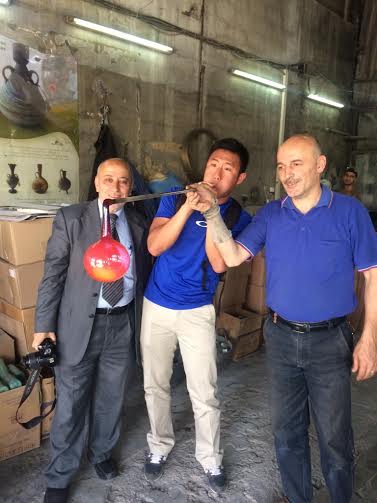Excellence Center arranges visits to key points of interests in Hebron and about Palestine. Among the featured landmarks of Hebron is its glass and ceramic factory and its kuffiyeh factory. The staff at Excellence Center took us to visit the glass and ceramic factory which is located in just a little further down the adjoining street to Ein Sara. Upon entering the factory, we were greeted with a huge fiery furnace with soaring temperatures of up to a thousand degrees Celsius.
We got to witness firsthand the creative process through which the local glass pieces were made. We were spectators to the melting of the glass into its gel-like, liquid state through an opening in the furnace through which the glass master would stick a metal rod through and skillfully curl the liquid-glass around by rotating the rod. The searing heat of the furnace could be felt every time he pushed the pedal to open the hatch to the opening. A series of curling, pressing and shaping processes would then follow, after which the final creation, which stood ready in all its vibrant colors and exotic pattern, would be dropped into a cooler furnace of about five hundred degrees Celsius to cool.
The most fascinating moment was when we got to have a go at blowing through the metal rod (which functioned in fact as a giant straw) to inflate the semi-malleable glass into a glass balloon of sorts. Mine unfortunately shattered but when the it was done correctly, resulted in a beautiful form. From the furnace zone we then proceeded into a separate glass-walled room further inwards where potters sat painting sets of clay potteries. We got to see up close the skillful imprinting of colorful patterns by hand and the resulting masterpieces that were lined up for drying upon shelves.
After leaving the shop within the glass factory, we headed to the kuffiyeh factory which was the main source of production in Hebron for the iconic and traditional Palestinian scarf. We were allowed access into the production backroom where a dozen clanging and clashing looms stood weaving the cloths that made up the kuffiyeh. We got to see the various types of textiles with the multitude of patterns and also the archaic but authentic machines at work with their flying shuttles.
Finally, we were brought into the store where an array of designs stood on display. It was a rare opportunity to purchase from the place itself something handmade and authentically representing part of the Palestinian culture. All in all, the experience was a fulfilling one and encompassed two very important and famous facets of Hebron’s staple productions.




